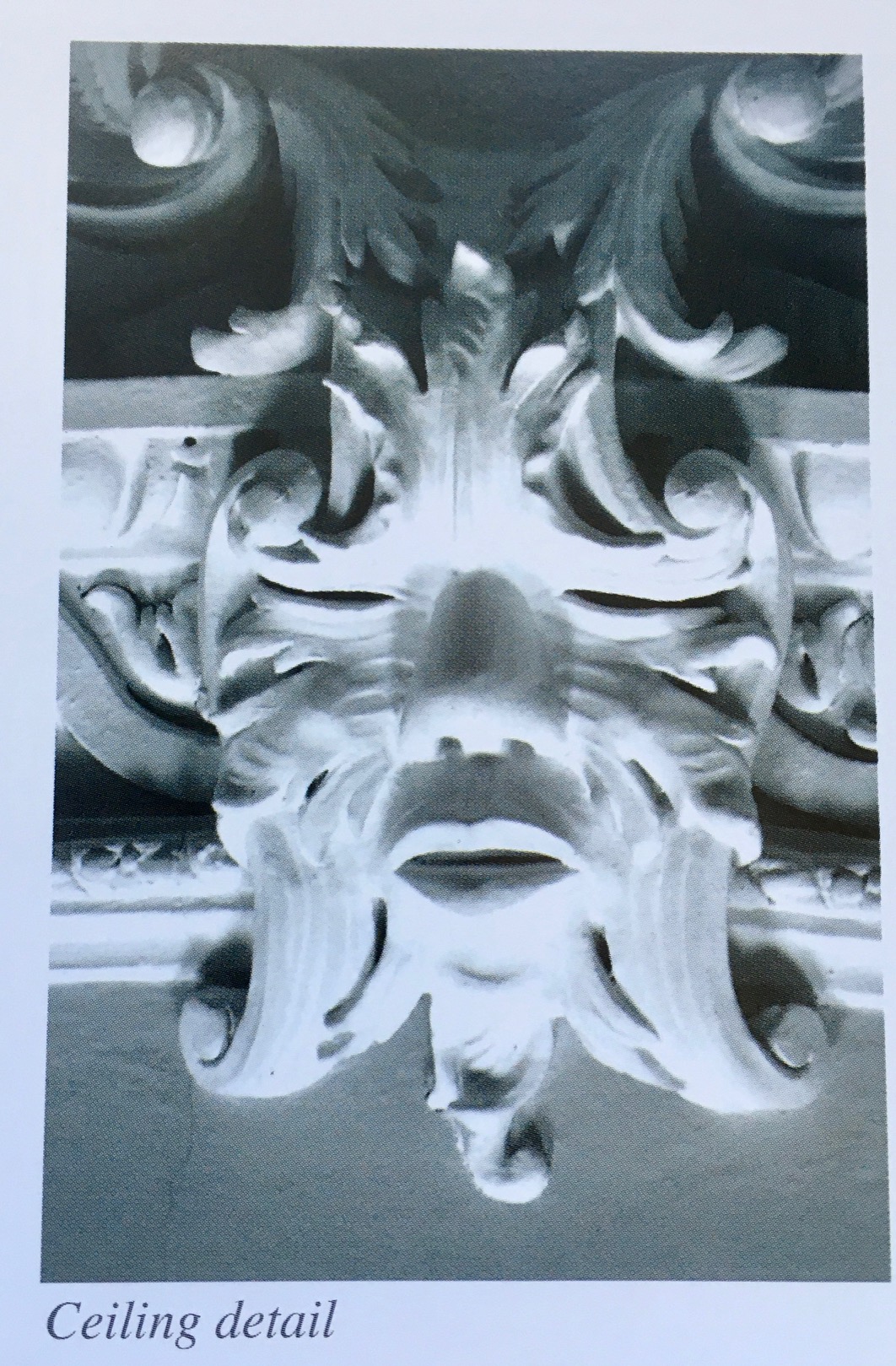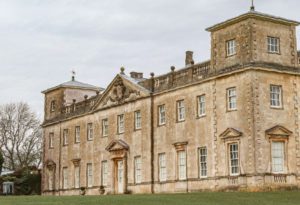The Green Man in the Dining Room
The next time you visit Lydiard House, look out for the Green Man in the dining room!
The dining room is an elegant space, part of the ground floor state rooms. They are all decorated with classical motifs in keeping with the Georgian fashion of the Palladian house. At one end of the dining room is a colonnade consisting of ionic columns that screen the servants in attendance on the dining table. Within the colonnade is a door with direct access to the corridor behind leading to the kitchens. The “social” end of the room, where the guests congregate around the dining table is the higher status end; the servants only enter this area in order to wait at table.
The dining room is decorated with ornate plasterwork covered with oak leaves and acorns bound with ribbons, symbolising abundance and plenty. The door architraves are decorated with laurel leaves bound with ribbons and the chimney breast and mirror is decorated with garlands of flowers. The main pattern on the ceiling is an oval surrounded by decorated panels of shells, acanthus, fruits and flowers and where the beams meet there are four different carvings of the face of a ‘green man’. This is an unusual Celtic symbol that is more often found in churches and is a remnant from pagan times. His presence in the dining room is possibly in tribute to the nature spirits for providing the abundant food that fills the table.
The green man is a symbol that has been found all over the world from antiquity to the present day. The Green Man is most commonly depicted in a sculpture as a face which is made of, or completely surrounded by leaves but the designs may have many variations. Branches or vines may sprout from the mouth, nostrils, or other parts of the face, and these shoots may bear flowers or fruit. “The Green Man” is also a popular name for English pubs and the signboards show various different interpretations of the name, sometimes showing a full figure rather than just the face.
Lydiard’s green man is an unusual inclusion in the plasterwork, another special little touch that makes the house so intriguing.


